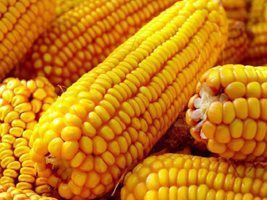
A private report from a Boston consultancy with a global presence predicts that Argentina could steal much of Brazil and the United States' corn market share. Other analysts point out, on the other hand, that the growth in Argentine production would be offset by greater demand from China for grains from the three countries.
In this scenario, the Buenos Aires Cereals Exchange released its latest corn production estimate at 36 million tons, which is 20% higher than 2015. Meanwhile, the Rosario Commerce Exchange reduces its soybean production forecast in the country to 52.5 million tons, which is lower than last year, due to recent rains in the main producing regions.
Due to the Argentine corn harvest taking place after the sales peak of the North American harvest, the possibility of the neighboring country stealing market share is a challenge, points out a report from Portal agriculture.com signed by correspondent Luis Vieira.
Don Roose of US Commodities, a consultancy in West Des Moines, Iowa, says it's important to note that the Argentine crop won't be available until April. “I believe that Argentina will have limited growth in market share because producers will be very aggressive sellers of corn regardless of the weather due to the need for money. This will keep prices low,” says Roose.
For Esteban Copati, agricultural estimates analyst at the Buenos Aires Grain Exchange, there are reasons to be optimistic about the new harvest and subsequent harvests due to a recovery in the total grain surface since the 2011/2012 harvest, before an increase significant amount of export taxes. “There are good conditions in the crops, coming from a year of El Niño, entering a harvest with a weakened La Niña. The weather conditions will be favorable”, says Copati.
Meanwhile, Ramiro Costa, chief economist at the Cereals Exchange, adds that this harvest and the next ones will be different from the previous ones because producers must stop withholding grains due to the free exchange rate and the end of 'retenciones' (taxes on exports). . “There will increasingly be fewer soybean and corn surpluses each harvest and smaller initial stocks with these more production-friendly policies. Now it is an advantage to sell to Argentine producers”, analyzes Costa.
Gustavo López, director of the consultancy Agritrend, I believe that the United States Department of Agriculture is right in its projection that Argentina will export 22 to 23 million tons in 2016/2017. “Argentina will be very close to Brazil’s export volumes. It will only be a jump from 17% to 17.5% of the total market, which is not that big of growth”, he explained.
Rains in important producing regions of Argentina could potentially mean losses of soybeans and corn. The wheat harvest is advancing with locations such as General Villegas, in the province of Buenos Aires, with rainfall exceeding 400 millimeters accumulated in October. So far, wheat losses have totaled two million tons. Until last week, there was a soybean planting progress of 13%, while the average for the period was 23%, but this was reversed in recent days and planting reached 50% in the country.
Producer with previous intention of planting 700 hectares of soybeans – the same area planted with corn – Hernando de La Torre is reviewing his plans after the losses: “I'm not sure if I'm going to risk planting all soybeans with this delay in planting and prices so low. Maybe I’ll change at the last minute to plant corn.”










